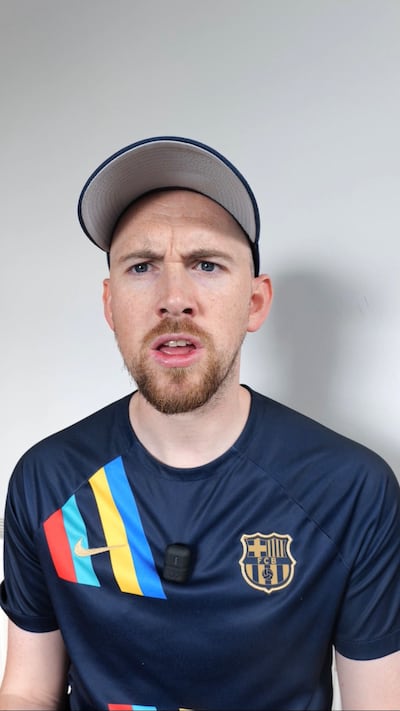The year was 2020 – the Covid-19 pandemic was sweeping across the globe, TikTok was the most popular app in the land and I was about to take my first tentative steps into the world of online comedy.

During the first lockdown, I decided that I would use my spare time to create sketches for the viral video app TikTok. My goal was to create comedy content that Irish people could relate to. I wrote down a list of possible material for my videos but, unsurprisingly, the Irish language didn’t feature.
At this stage the Irish language was not playing a big role in my life. In my job as a primary schoolteacher, I’ve always had a decent level of Irish but I’m by no means fluent. When I thought of Irish I was confronted with images of Peig Sayers, the modh coinníolach and having a minor meltdown trying to understand the Donegal lad during the tape test.
If someone had suggested to me that I should make bite-sized content examining the intricacies of the Irish language, I would have choked on my antigen test. To me the Irish language was never something I deemed worthy of discussion from a comedic viewpoint. Like a pub during lockdown, it was simply a no-go area.
Then it all changed. In a watershed moment, I created two comedic characters with Limerick city accents. My idea was to write sketches that would highlight the rapport between the characters while discussing different topics. In the first video for these characters, I had them discuss how the names of animals were chosen in Irish. I posted the video on TikTok with low expectations.
However, the response was huge. The video was a viral sensation but it wasn’t for the reasons I suspected. It received hundreds of thousands of views and comments but, to my shock, nobody was discussing the characters. All the comments, all the dialogue, were about the Irish language.
It was clear to me that there was a real appetite among the public to have a forum to discuss Irish so I began to make more videos about the language. With each new video I posted came uncharted success for me. I was garnering tens of thousands of new followers each week and amassing millions of views.
The comments section under each video was alight with people sharing their own experiences of learning the language. People of all ages and backgrounds seemed to partake in a national discourse about our language but it didn’t stop there. Thanks to the wonders of the internet, the videos even spread to an international audience.
Many viewers had not even realised that Ireland had its own native language while others began to list Irish’s similarities with other languages. All in all, there was a genuine interest in the language on a huge scale and it proved to me one thing – that the Irish language is still a relevant part of modern society.

This view has been merely reinforced by the success of other creators. Accounts like @irishwithmollie, @gaeilgevibes and @gaeilge_bheo all endeavour to teach and promote the Irish language through social media. The language is creating its own niche online thanks to talented creators like these and it is apparent that now, more than ever, people are aware of the importance of promoting our native language.
As Ireland embraces its modernity while valuing its linguistic and cultural roots, the role of the Irish language will be an important one. The Irish language acts as a cherished link to the past but it can also act as a key to the future.
We all share a common ownership of the Irish language – it lives and dies with us. If, as a people, we prioritise making Irish a lived language there is no reason why Irish can’t continue to grow and evolve. It is a symbol of Irish heritage and cultural identity and it is our responsibility collectively to speak it now or face losing it forever.
As the old Irish proverb says: Ní neart go cur le chéile – there is no strength without unity.
Follow Seamus Lehane on TikTok at seamboyseam.















